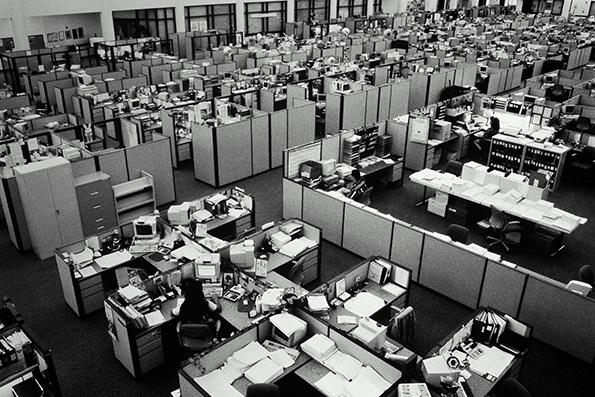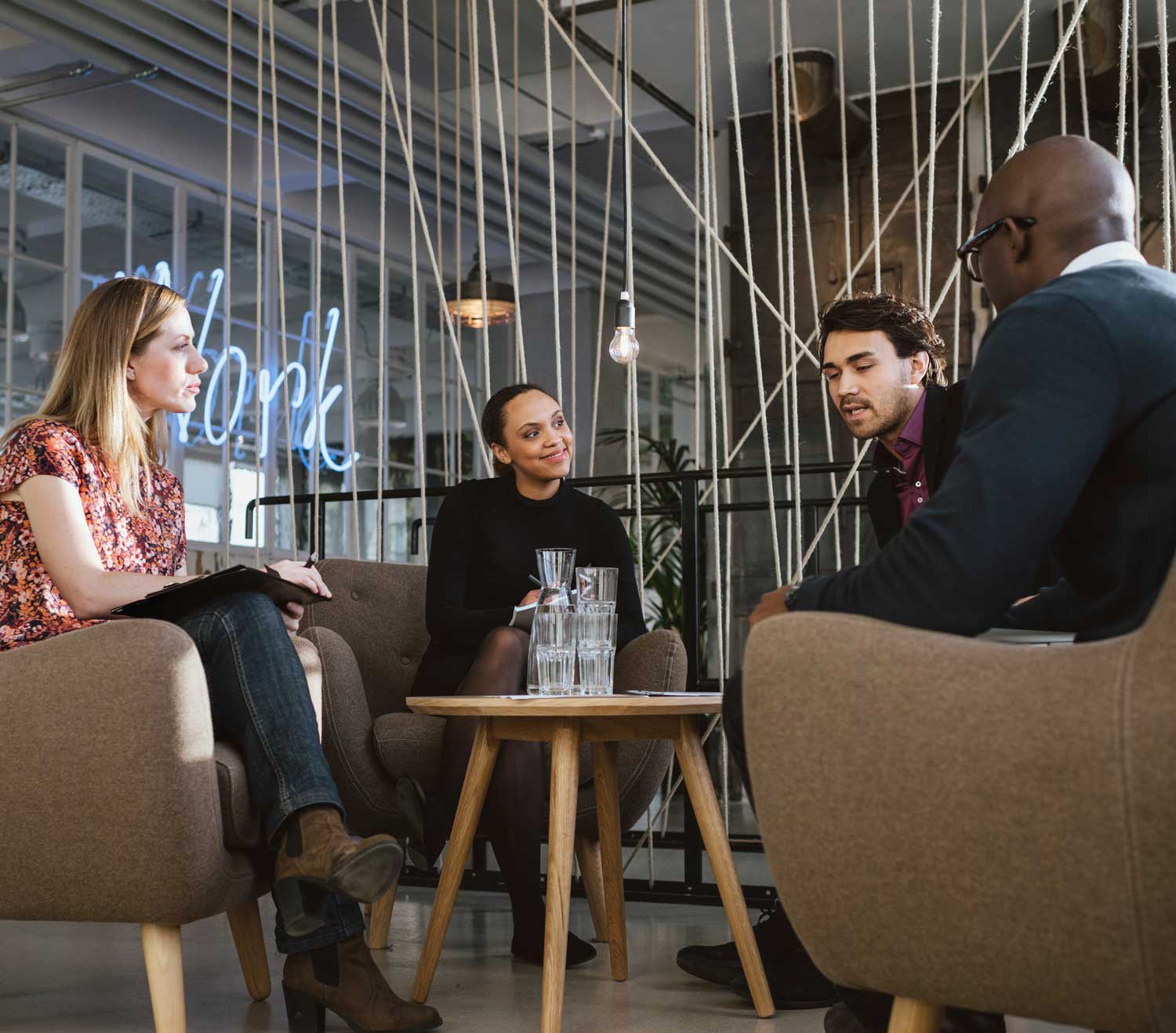As it turns out, workplace design is critical to the productivity and well-being of our workforce. And it also so happens that most of our work spaces were based upon designs that worked back in the day – before technology and a younger, tech-enabled generation transformed the way work is done. As a result, office design has gotten a lot of attention lately, not all of it positive.
As more and more cubicle farms give way to open office design, employers constantly juggle to keep employees productive and happy in competing work environments – quiet, private areas for focused work versus the creative chaos of open space.
Increasingly, that focus is on millennial workers whose workstyle preferences are different than those of earlier generations, and who in fact will likely opt for an environment far different than the cubicle confinement so familiar to their parents. As companies aim to position themselves for future growth and innovation, one of their biggest concerns is how to attract and retain skilled millennial workers for the next generation.
Changing the physical environment of our work places to accommodate these preferences may seem risky at first, but actually, a recent book suggests that this transition might even nurture geniuses.
Creating conditions for “genius” work environments
Eric Weiner, the New York Times bestselling author of The Geography of Bliss, recently published a new book called The Geography of Genius, in which he argues that genius is more likely to flourish in dynamic urban settings with a mix of conditions that stimulate creativity, ingenuity and innovation. His book examines a handful of “genius clusters,” including Renaissance Florence, ancient Athens, Song Dynasty Hangzhou and, significantly, Silicon Valley.

Weiner says that genius is grown in environments that are nurturing and challenging at the same time. Density and diversity are important. A little bit of chaos helps, and tension “is the mother of all invention.” Background noise is important, too. Weiner cites research showing that when people are writing or trying to solve a problem, they’re better off in an environment with an ambient noise level like that of a coffee shop.
Weiner also provides tips about how to create the conditions that will stimulate genius: density, intimacy and trust.
What makes Silicon Valley special, according to Weiner, is the creative ecology. The Valley has become a processing system for ideas, mixing cooperation and competition.
This generation, it seems, is poised to embrace the “genius” environment. But how?
Understanding the millennial worker
Millennials, born between 1980 and 2000, currently make up 25 percent of the workforce in the U.S., and by 2020, they will constitute 50 percent of the global workforce. The challenge is how to design office space for a generation with a different approach to work.

These workers entered the workforce during the Great Recession, and many feel that they initially compromised to get the job they needed. Their primary concern is now finding work that is fulfilling, in an organization that shares their values and makes a positive difference in society. They are uncomfortable with rigid hierarchy and will often “move on quickly if their needs are not being met.”
In fact, adapting to the millennial work style requires understanding other lifestyle changes embraced by this generation. Millennials are more often choosing a connected urban lifestyle, embracing bicycles and public transit and reducing their environmental footprint. They desire to work in transit-oriented locations with flexible hours and easy access to outdoor space, restaurants and other amenities.
It makes sense, then, that this worker will not be attached to the corner suite or enthused by the sterile, traditional cubicle environment. And likewise, a worker who desires flexibility will have looser ties to a single workstation, so keeping him or her productive and happy will involve creativity and adaptability on the part of the employer.
Adapting the office space
The open office layout has been around for decades. The open “bullpens” of the 1950s led to the dreaded cubicle farms in the 60s and 70s. A new approach to open office layouts has taken hold in recent years with the rise of knowledge work, startup culture and mobile technology, replacing the cubicle farms where baby boomers spent many of their peak work years.

This new approach involves flexible seating arrangements and no or low partitions between work stations. Regardless of the backlash from some (usually) older workers, more and more companies are opting in.
Citigroup recently made headlines when it announced that its downtown Manhattan office would feature a “minimalist” open-office design with open seating that is hoped to raise energy levels and save money as more people work flexible hours or telecommute. Employees have been asked to give up assigned seating in an office that now has 150 spaces for 200 employees, a cost-saving measure that takes into account flexible work schedules.

And that may be key to the open office: allowing employees flexibility within the new framework. People need different conditions throughout the workday to maintain focus and productivity.
“We only spend 50 percent of our time in our primary work stations,” according to Nicole Coughlin, a spokeswoman for Knoll, an office furniture design company. “It’s important to create different user experiences so someone can pick and choose what kind of environment they want to have throughout their day.”
Employers need to create space that allows employees to find a place that facilitates their need for focus, collaboration, learning, or socializing. The most effective open workplaces balance focus and collaboration, and they give employees the chance to enter in and out of the different modes throughout the day, including:
- Private spaces for quiet time or confidential conversations.
- Enclave spaces where small groups can meet on the fly.
- Team meeting spaces.
- Assembly areas for all-hands meetings.
- Community spaces, like lounges or cafes, for easy socializing and informal idea generation.
The key is establishing a culture of trust by having clear expectations of how people work together effectively and rules to ensure workers’ needs for quiet or a clean space to work can easily be met.
Companies that set clear expectations and respect employees’ needs as they go forward with creative and adaptable workplaces might well lay the groundwork for a “genius” environment.
Do you work in an open office environment? Does the open layout stimulate creativity and innovation in your workplace, or do the noise and chaos inhibit productivity? Share your thoughts, and please be sure to follow us on Facebook, LinkedIn and Twitter for daily updates from Westlake Urban.




